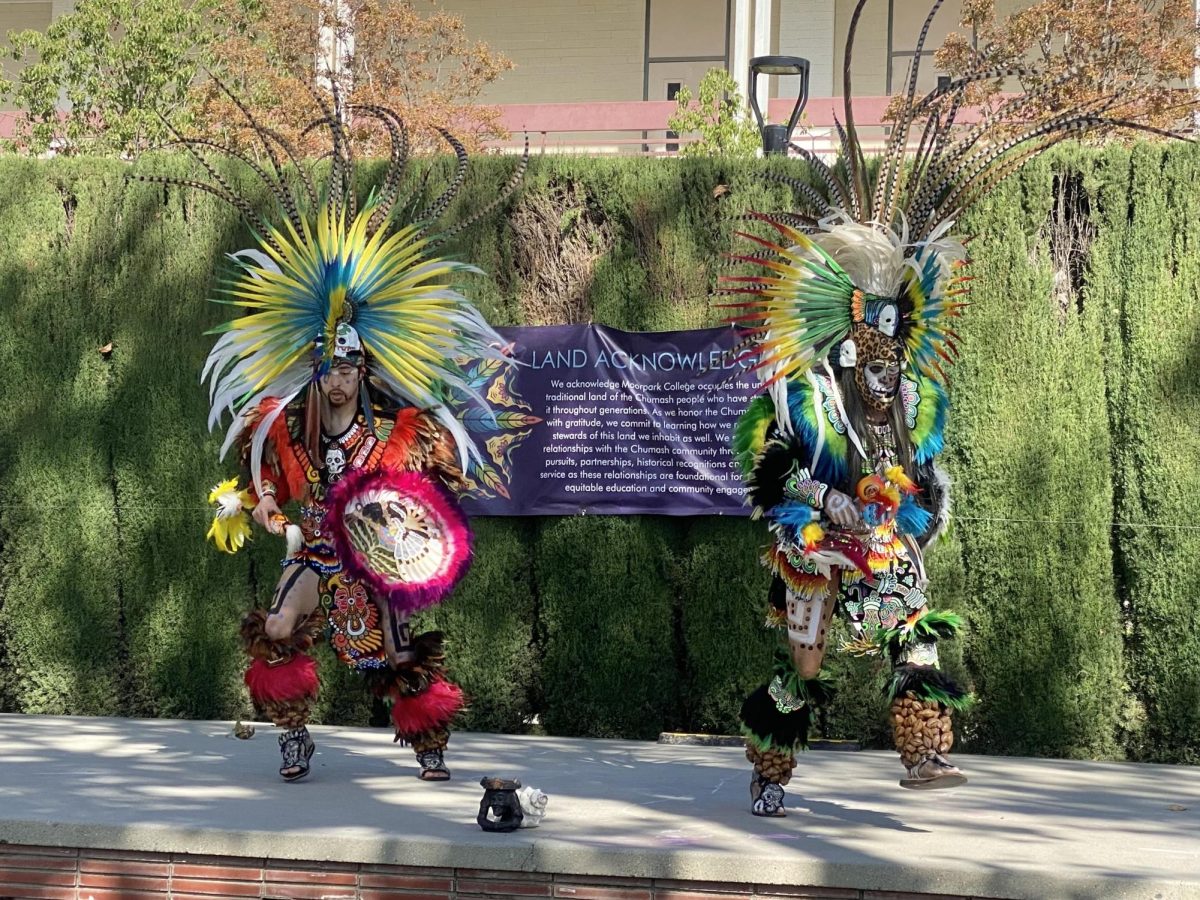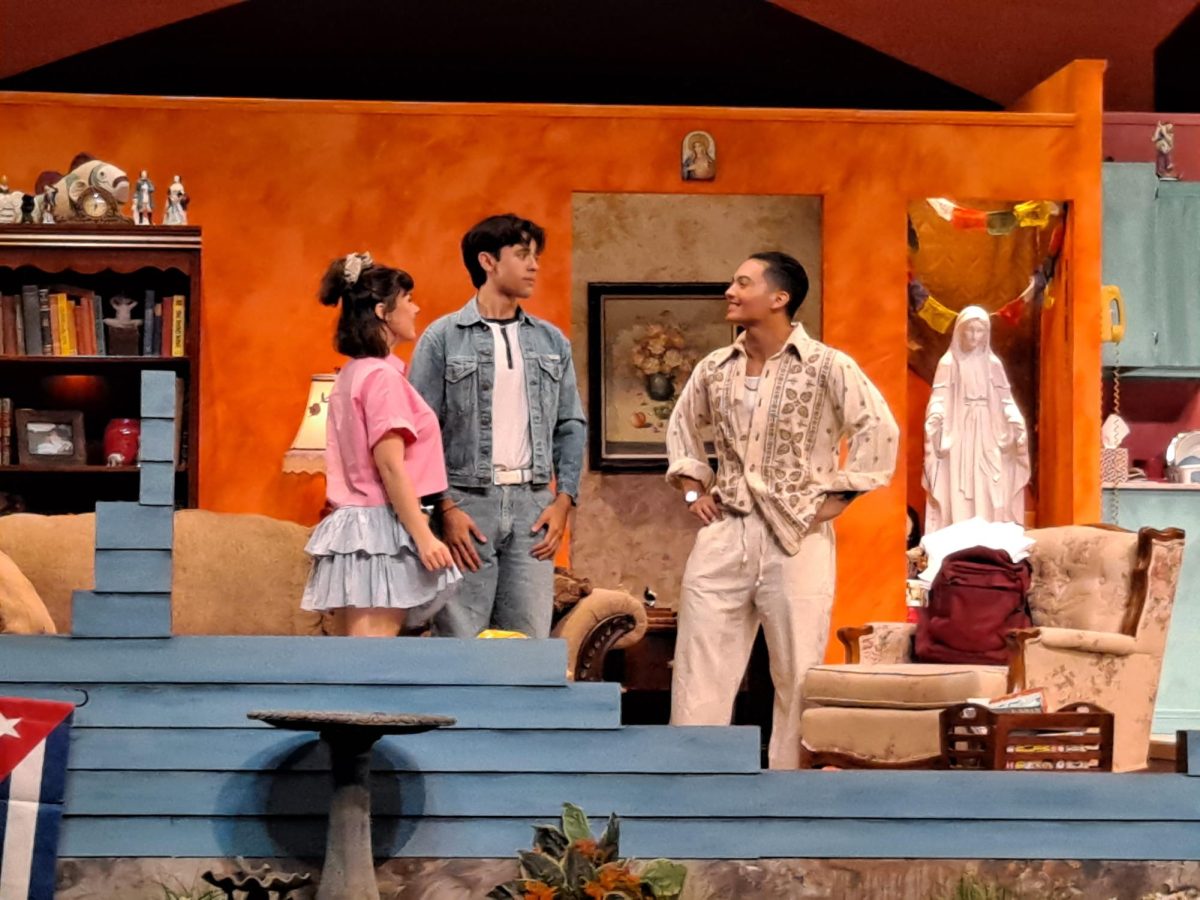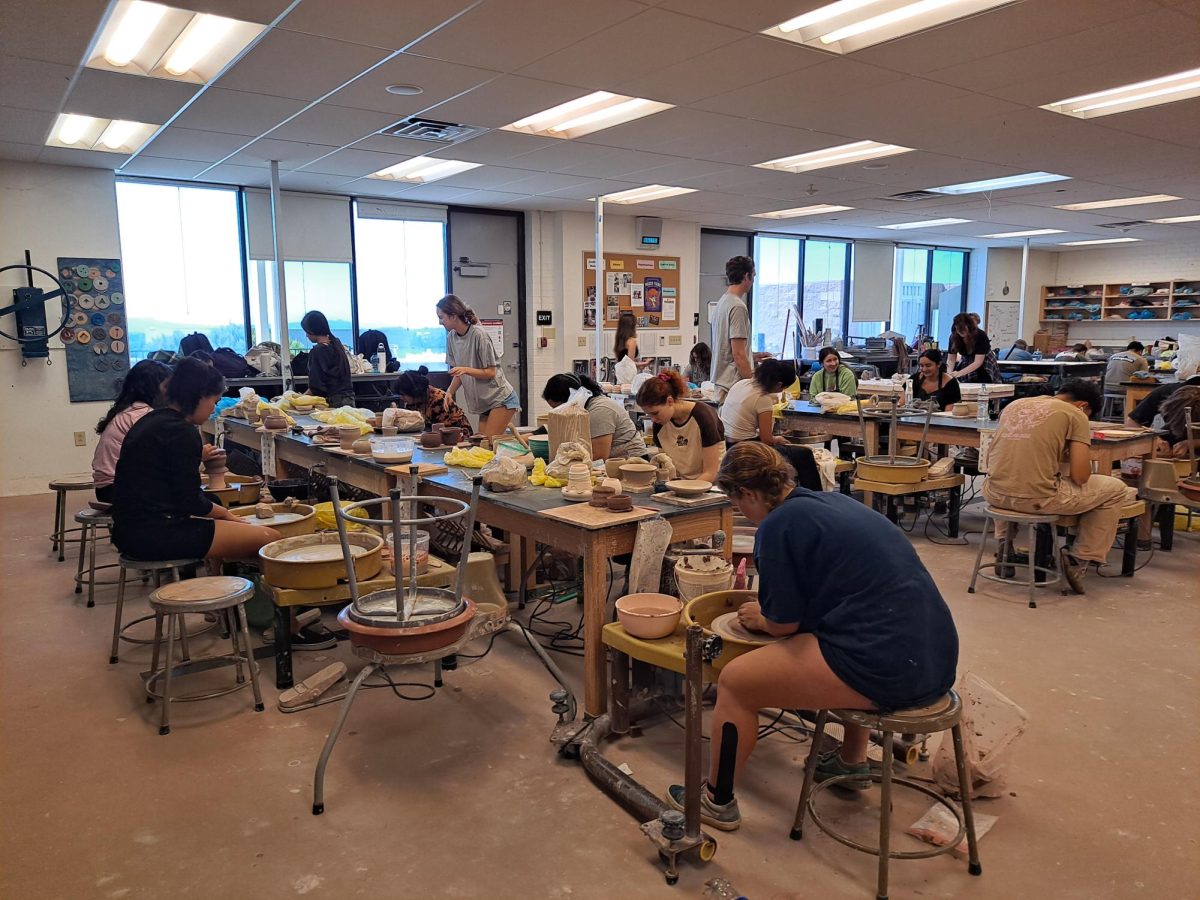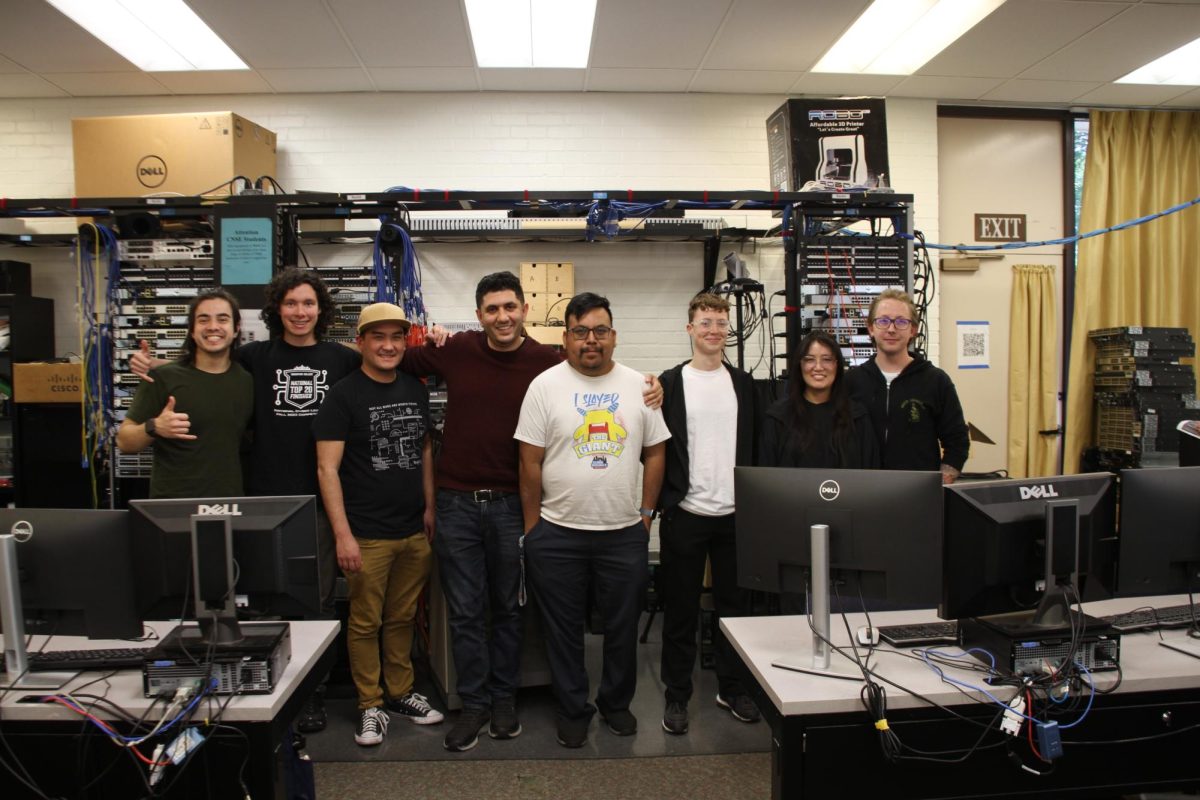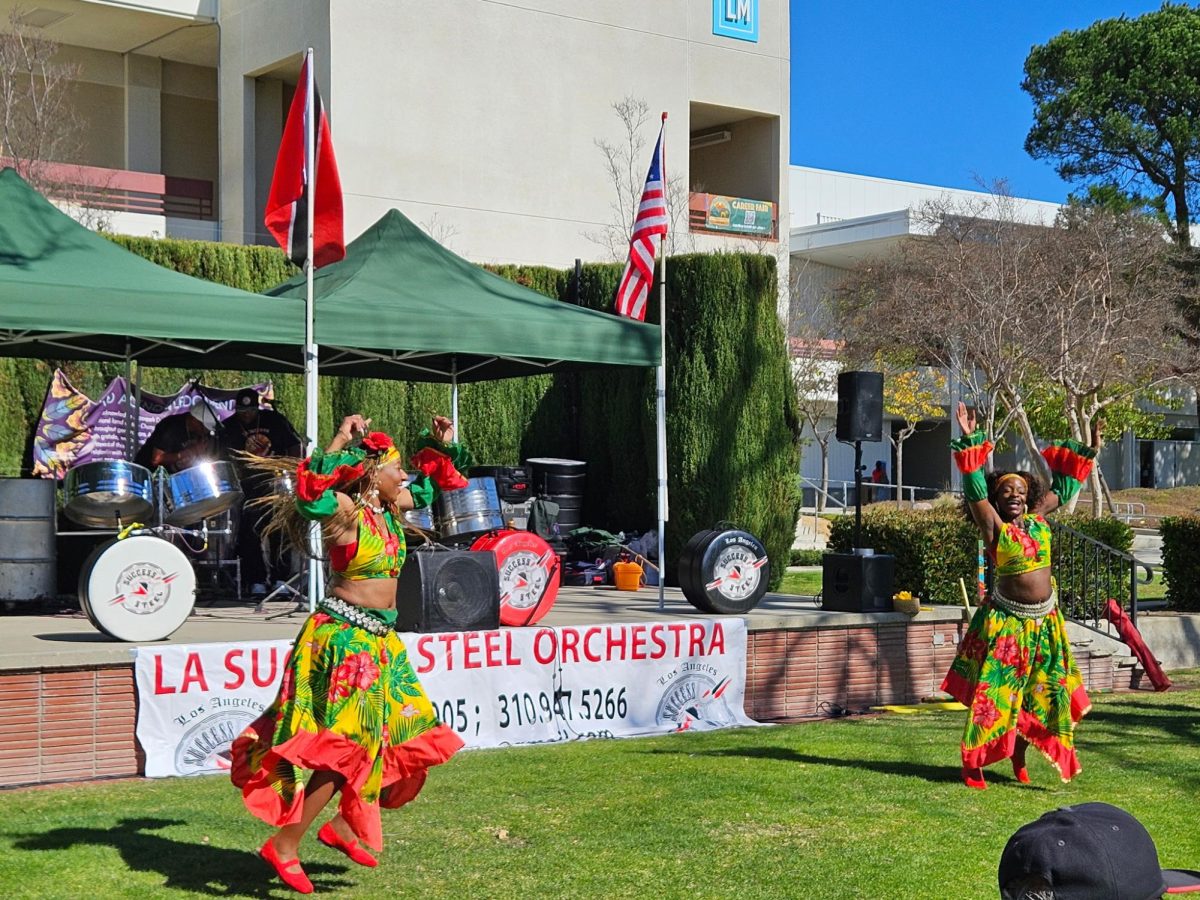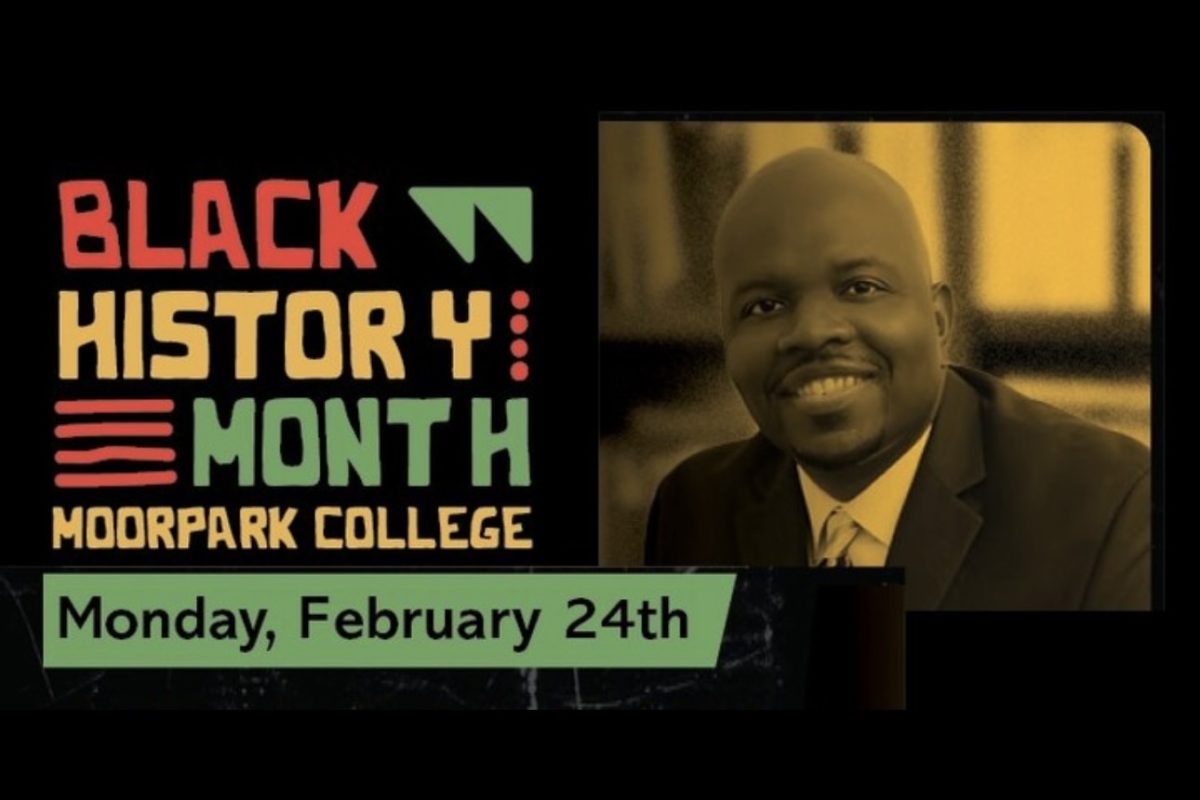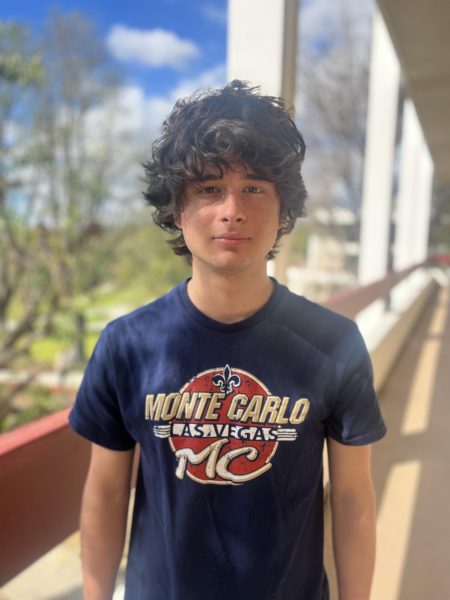Last month, Moorpark College celebrated Native American Heritage Month with a visit from the Tlanextli Tlacopan Aztec Fire Dancers, a traditional dance group that spreads the history and culture of their ancestors through ritualistic dances.
On Nov. 14, the three dancers, all from Mexico City, performed unique dances with their colorful and carefully crafted costumes that were each individually made by hand.
Lupe Tellez, a member of the Tlanextli Tlacopan Aztec Fire Dancers, explained the significance of the group’s dynamic costumes and dances.
“Each costume has their own regalia and they all design it their own way or with family,” Tellez said. “Each dance has its own meaning, like seeds on their feet and the elements and all.”
One specific dance performed at the event is known as the “Fire Dance.” In this piece, the performers created a controlled fire and put a piece of their leg or body to the fire to honor it.
“’Fire Dance’ represents the cosmos and the serpent, because the fire moves like a snake,” Tellez explained. “The snake represents our Mother Earth, people know it also as Guadalupe, who is Mother Earth and moved by the serpent.”

The dancers also featured symbols of animals within their costumes to represent the tribe they are affiliated with.
One of the male dancers, Ocelotl Lupe Martin, had an eagle on his costume as he belonged to the Eagle Tribe and portrayed the Eagle Warrior of the ceremony. Martin Tlatoani Huitzilopochitli, another dancer, wore a jaguar head mask, which represented the Jaguar Tribe he belonged to, representing him as the Jaguar Warrior.
To further demonstrate these symbols, the two warriors performed a dance symbolizing the battle between the two tribes.
This “fight” was to represent the training that the males of the tribes go through to face in battles. During the dance between the two warriors of the Jaguar and Eagle Tribes, Tellez assisted the performers by beating the “Teponaztli,”drums played to a specific beat that the dancers would follow.
Tellez further explained the steps members of these tribes would need to take to be trained for battle.
“You would belong to the Jaguar or Eagle Clan and you would be trained by the elders to learn battle moves and train,” Tellez said.
Members of the Tlanextli Tlacopan Aztec Fire Dancers troupe were met with support and excitement from Moorpark College students in attendance. The dancers also addressed the significance of highlighting traditional Native American performers on college campuses.
“It’s important to let everyone know we’re here, very alive [with] hearts beating and [to] make sure we’re known, and it’s beautiful to share cultures and get to know where everyone’s from,” Tellez said. “The dances are gifts given to us from our ancestors, the dances are stories and we tell the stories with our feet, and we are here to honor indigenous people north to south.”
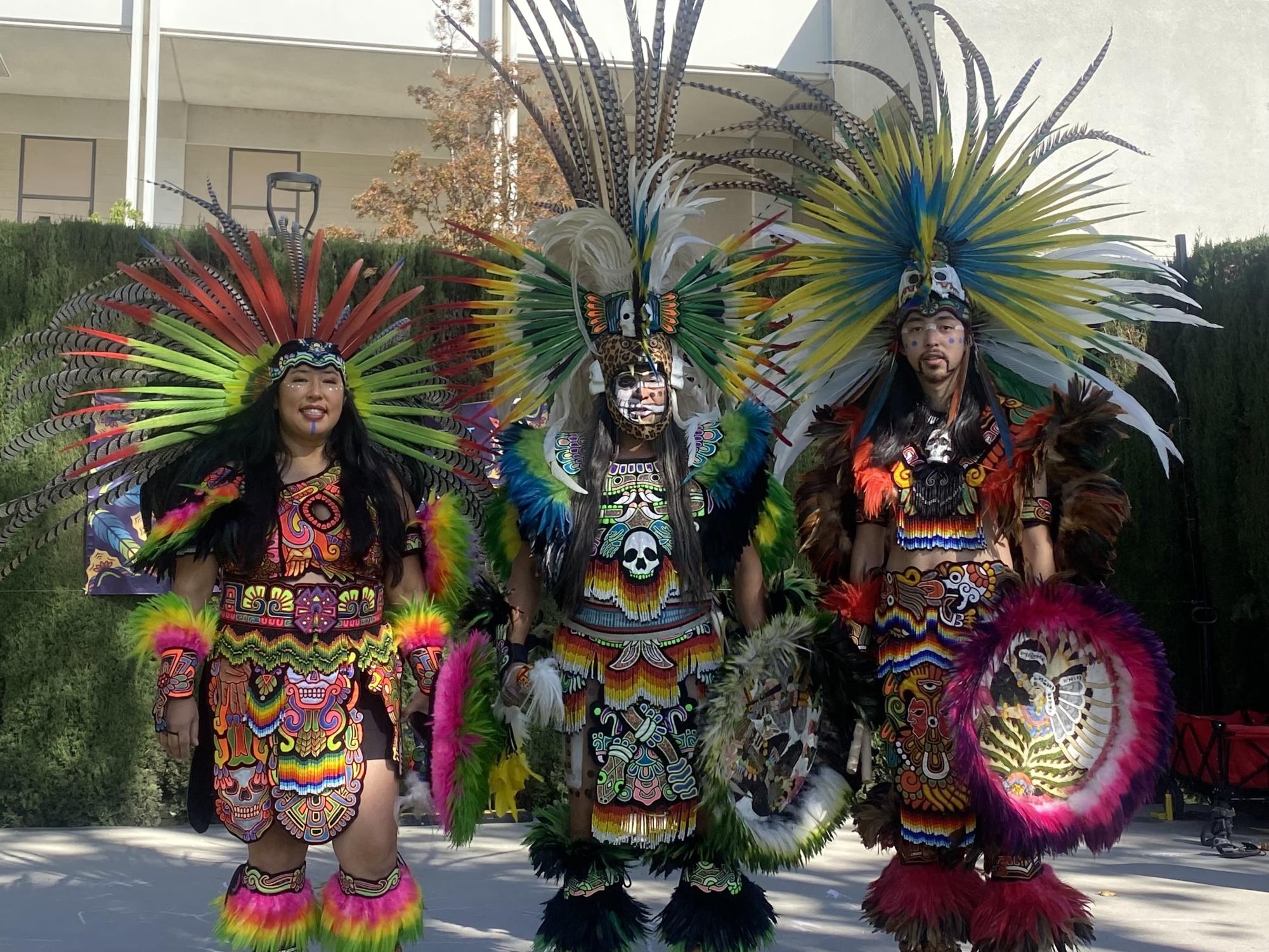
In addition to the Tlanextli Tlacopan Aztec Fire Dancers, Moorpark College continued to pay tribute to the heritage and traditions of Native Americans through several subsequent events throughout the month.
On Nov. 15, students attended a Traditional Chumash Storytelling event hosted by Chumash Elder Julie Tumamait in the Performing Arts Center. Students also had the chance to virtually participate in the Mixteco Indigena Community Organizing Project webinar on Nov. 20 to connect indigenous populations with resources available at the community level.
While Native American Heritage Month has come to a close, Moorpark College seeks to honor native populations year-round with customary broadcasts of the institution’s land acknowledgment, as well as the inclusion of native voices in on-campus events.
For more information on the Tlanextli Tlacopan Aztec Fire Dancers, click here.

